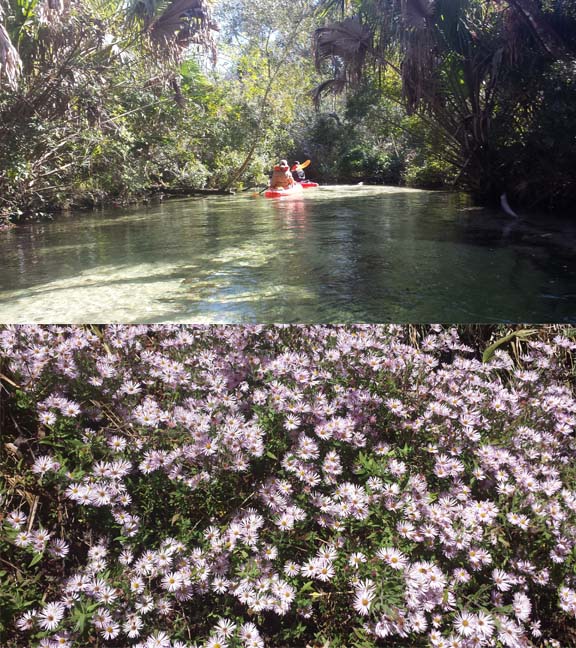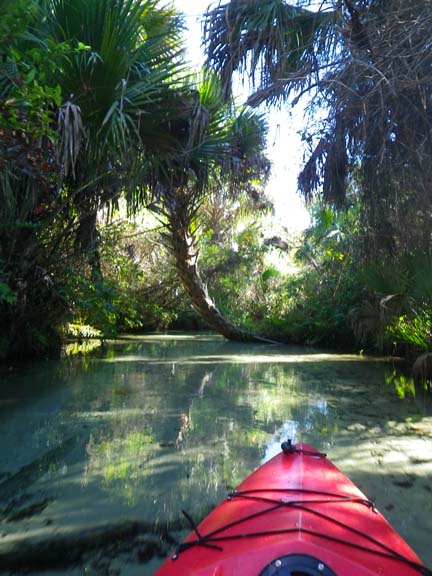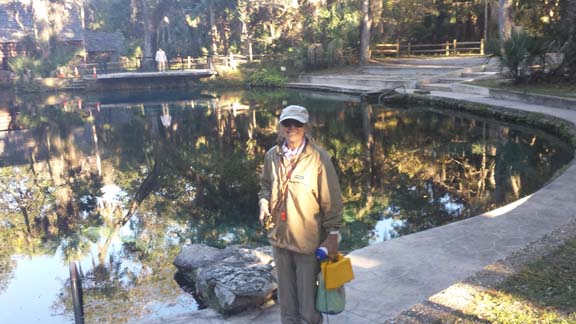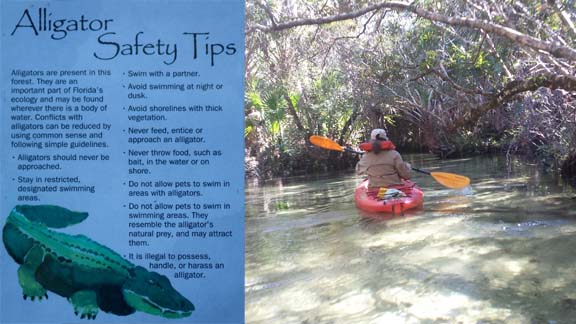We flew down to Florida early December on a jaunt to use a Jan. 1 deadline timeshare. We ended up in Palm Coast, which lies between Jacksonville and Daytona Beach and just south of St. Augustine, on the Atlantic side. The Matanzas River ran outside our front door, and the beach was a toll-pay over the bridge.
It is an area of Florida with which we were unfamiliar. We have paddled in the Everglades, Miami, and Sanibel. We have run several articles on the Keys. We have reported on WaterTribe’s Ultimate Florida Challenge (race around the state) but never covered this area.
It was not looking productive. None of the many Florida kayak guidebooks written over the past 20 years, had much on this area, except for St. Augustine. To the south the Canaveral Seashore is known, and to the north, Cumberland Island, Georgia, but not much in between. So we went to our Florida source: Kayak guru Ken Fink, who retired to the Tampa area several years ago with his wife, Joan. They still return to Maine in summer.
Ken responded immediately, and spoke of how they prefer to paddle the fresh water flows and springs in Florida (less crowded) and the ocean in Maine. He gave us several suggestions and particularly recommended Juniper Springs run. It turned out it was only an hour from Palm Coast, so Juniper Springs it was.
We crossed from the coast west to Juniper Springs in the Ocala National Forest, about an hour’s drive. Juniper is one of four notable springs in this area, the others being Alexander, Salt, and Silver Glen. (Silver Glen Springs was featured in the first chapter of Marjorie Kinnan Rawlings’ classic youth novel, The Yearling, published in 1938.)
Juniper Springs is unique in that the National Park Service has a canoe/kayak concessions for a seven-mile run down Juniper Creek to see up close the Juniper Prairie Wilderness Area. They pick you up at the end on an hourly schedule.
The combined daily water flow from Juniper and Fern Hammock Springs is about 13 million gallons, which assures a swift push down the creek.
Jupiter Springs is a gorgeous place and historic. It was a Civilian Conservation Corps project in the 1930s, whose gratefully employed workers under FDR built a lovely mill wheel and house, a concrete amphitheater surrounding the spring. It has a campground, .75-mile barrier-free interpretive nature trail, and camp store.
You are supposed to get on the water by noon, and they say it takes three to four hours to make the run. It took us exactly three and we probably could have done it in less, if it weren’t for back issues with the sitontop.
The springs formed millions of years ago. A shallow sea that once covered much of Florida formed layers of limestone from compressed coral reefs and shells in the ancient sea. Acidic rain seeped into the limestone and formed caves and underground channels. The limestone bedrock that collapsed formed the springs. This natural geological system, called Karst Topography, includes interesting features like warm springs and aquifers.
The water temperature is a constant 72 degrees year-round, and the springs pour millions of gallons of water from the aquifer daily. You can see where the water boils up out of the aquifers, like a water hurricane.
It is common for animals such as turtles, alligators, snakes, raccoons, eagles, ospreys, herons and egrets to hang out in these areas. In the jungle, but seldom seen in the day, are bobcats, coyotes, grey foxes, and possibly even the nearly extinct Florida panther. Alas, we saw several turtles but no alligators. They must have been withdrawn into their winter hiding holes because of the chilly weather. In fact, we saw little wildlife other than a fawn disappearing into the woods, a great blue heron, several red-bellied cooters (a type of freshwater turtle), as large as small platters, sunning on partially submerged logs, some zebra longwing and viceroy butterflies, a few bluegills and a large school of what looked like freshwater American shad, which are certainly found in the nearby St. Johns River. (Freshwater fishing in this part of Florida is fabulous, by the way, and is certainly worth looking into if you are in the area with more time time than we had.)
The current pushed us along swiftly, and I loved ducking down to avoid overhanging limbs. NPS had neatly sawed off most of them for a non-obstructed run for this very popular tourist attraction. Most people have a float trip mentality, and you do actually have to pay attention to get around some limbs, logs, and haul yourself out of the brush on the side.

T. It looks serene, but the current could be fast and the obstacles many. B. The only flowers blooming at this late season were these unidentified asters.
Early December, there were only about five parties out on the river, but in high season 35-50 parties haul down the creek. It must be kind of crazy on the water, although you know you won’t get any drunk yahoos because of bag checks at the start.
The collision of National Park Service concession mentality and wilderness experience aside, Juniper Springs is an absolute marvel and a wonderful antidote to New England winter.
In summary, if you find yourself in mid Florida on either coast, we highly recommend a jaunt inland to Juniper Springs.



